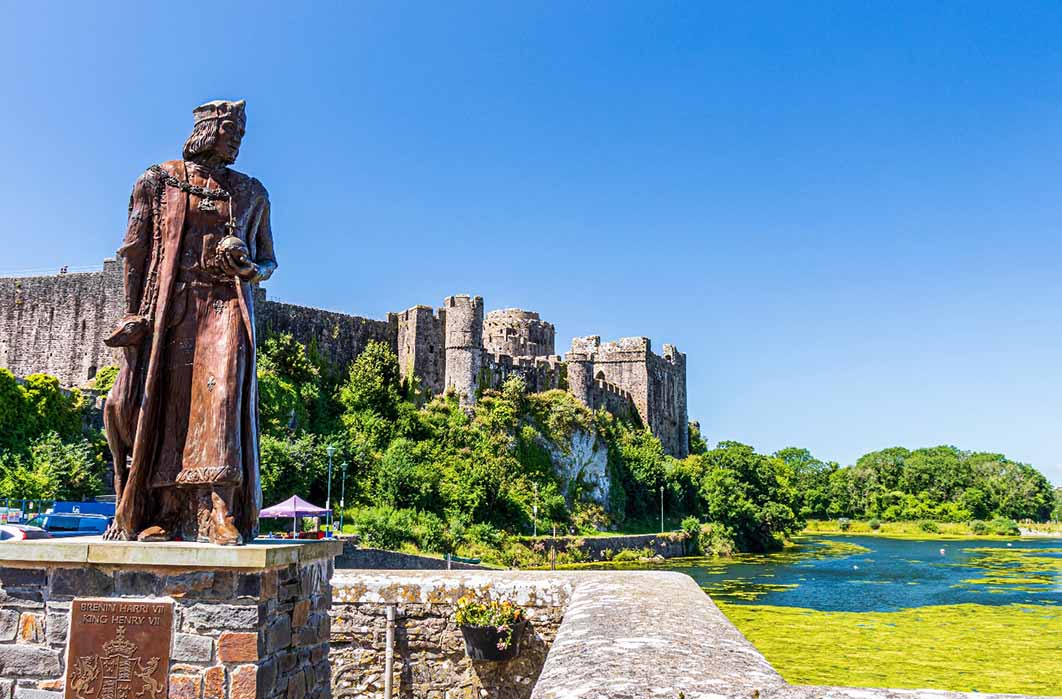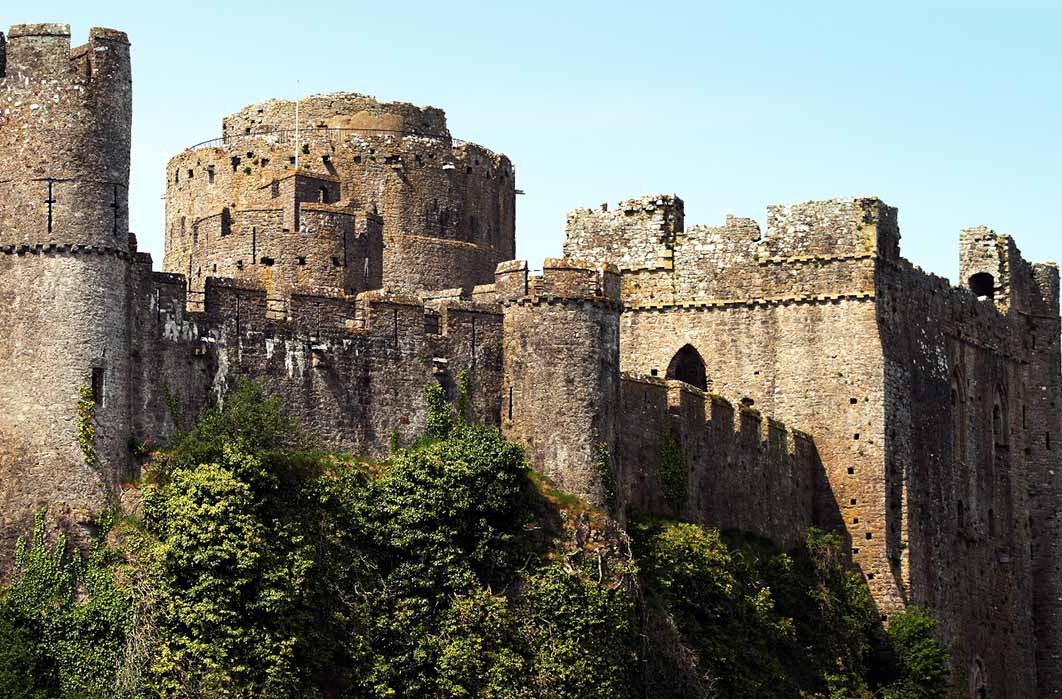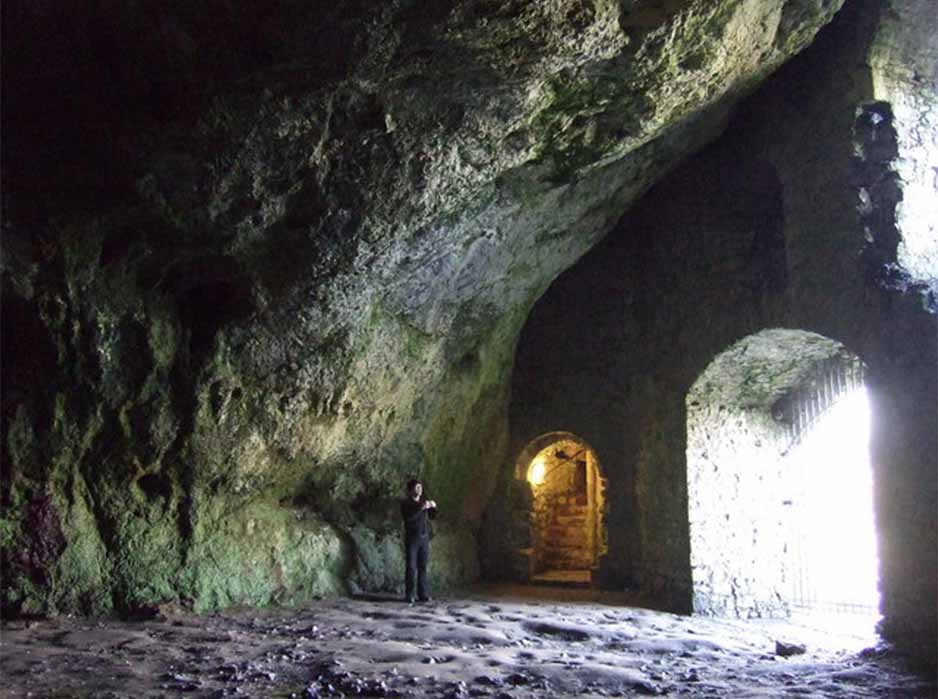
Pembroke Castle Revealing A Secret Of Henry VII’s Birthplace
Situated on a high ridge between two tidal inlets in the south-west corner of Wales, Pembroke Castle, with its walls still standing sentinel after hundreds of years, dominates the landscape. These walls stand as silent witnesses to a narrative of pre-historic occupation as well as centuries of tumultuous history; to the power of William Marshall, ‘England’s Greatest Knight’; and to the birth of the most infamous of all English royal dynasties, the Tudors. Pembroke Castle is best known today as the birthplace of Henry Tudor, later King Henry VII, but recent archaeological excavations may reveal Henry VII was not born in one of the towers at all!

The impressive walls of Pembroke Castle in Wales (Geoff Pickering/ Adobe Stock)
Wogan’s Cave At Pembroke
The castle stands on a site that has been occupied since prehistoric times, with a large cave known as Wogan’s cavern hidden beneath the castle. The name Wogan is derived from the Welsh word ogof, which literally means ‘cave’. The cave, formed of natural limestone, is an enormous 25 meters (82 feet) long. In 1908 the nearby Priory Farm Cave was excavated by Dr Durrell Style and Mr Dixon, which conclusively proved that there was Palaeolithic occupation in the area. Their finds included flint tools and worked bone, on display at the National Museum of Wales.

Wogan’s Cavern under Pembroke Castle (ceridwen / CC BY-SA 2.0)
Wogan’s cavern, despite its easy accessibility from both ground level and within the castle, until recently had been little explored. Curators and visitors alike were satisfied by knowing that it was a likely site of ‘Stone Age’ occupation. However recent initial archaeological investigation has revealed its floor surface is pristine and proves that visitors are literally walking in the footsteps of people from the Palaeolithic and Mesolithic periods. Excavations undertaken in 2021 under the direction of Rob Dinnis and Jenni French, of Liverpool University, have uncovered a large and varied assemblage of worked flints, animal bones and shells in situ just centimeters below the surface of Wogan’s Cavern, dating to 10,000 years ago. Clearly the Palaeolithic inhabitants were making use of the cave’s natural shelter and taking advantage of the access to water and the food sources that it provided via access to the Milford Haven Waterway. With further excavations being planned for the next few years, who knows what secrets the cave might yet yield, but there is another secret to Pembroke Castle.
The First Anglo-Norman Castle
High above the cavern the first castle on this site was built in 1093, by Arnulf de Montgomery, a powerful Anglo-Norman lord who played a leading role in the Anglo-Norman invasion of Wales in the 11th century. He was the son of Roger de Montgomery, a Norman knight who did not fight at the Battle of Hastings, but he was awarded extensive lands in England in 1067. Arnulf first features in the historical record when he witnessed, alongside his elder brother, a grant of land his father made to a Norman monastery in 1082. Arnulf was a leading Anglo-Norman Marcher lord and instrumental in subduing Welsh resistance in southern Wales, for which he was well rewarded. He would later go on to rebel, along with his family, against William II (Rufus) though this does not seem to have affected his position, and when he later pressed further into Wales, he used the area around Pembroke as a base from which to move north and attack.
- William Marshal: One of the Most Important Knights in Medieval England
- Treasure Hunter Finds the First Celtic Chariot Burial in Wales, Rewrites Ancient History
- Look History in the Eye! King Henry VII Reconstructed from Death Mask
This early castle at Pembroke consisted of earthen rampart and a timber palisade, which it has been hypothesized incorporated and utilized earlier Iron Age structures, possibly a bank and ditch. When Arnulf and his family rebelled against William Rufus’ brother Henry I, the whole family were banished from England. Pembroke was taken from him and he lost the power he wielded in the Marches. His rebellion is recounted by the chronicler Orderic Vitalis who recorded that he was a traitor who should be pursued “relentlessly from both sides, (and make) no peace with him until you have him in your hands dead or alive.”





